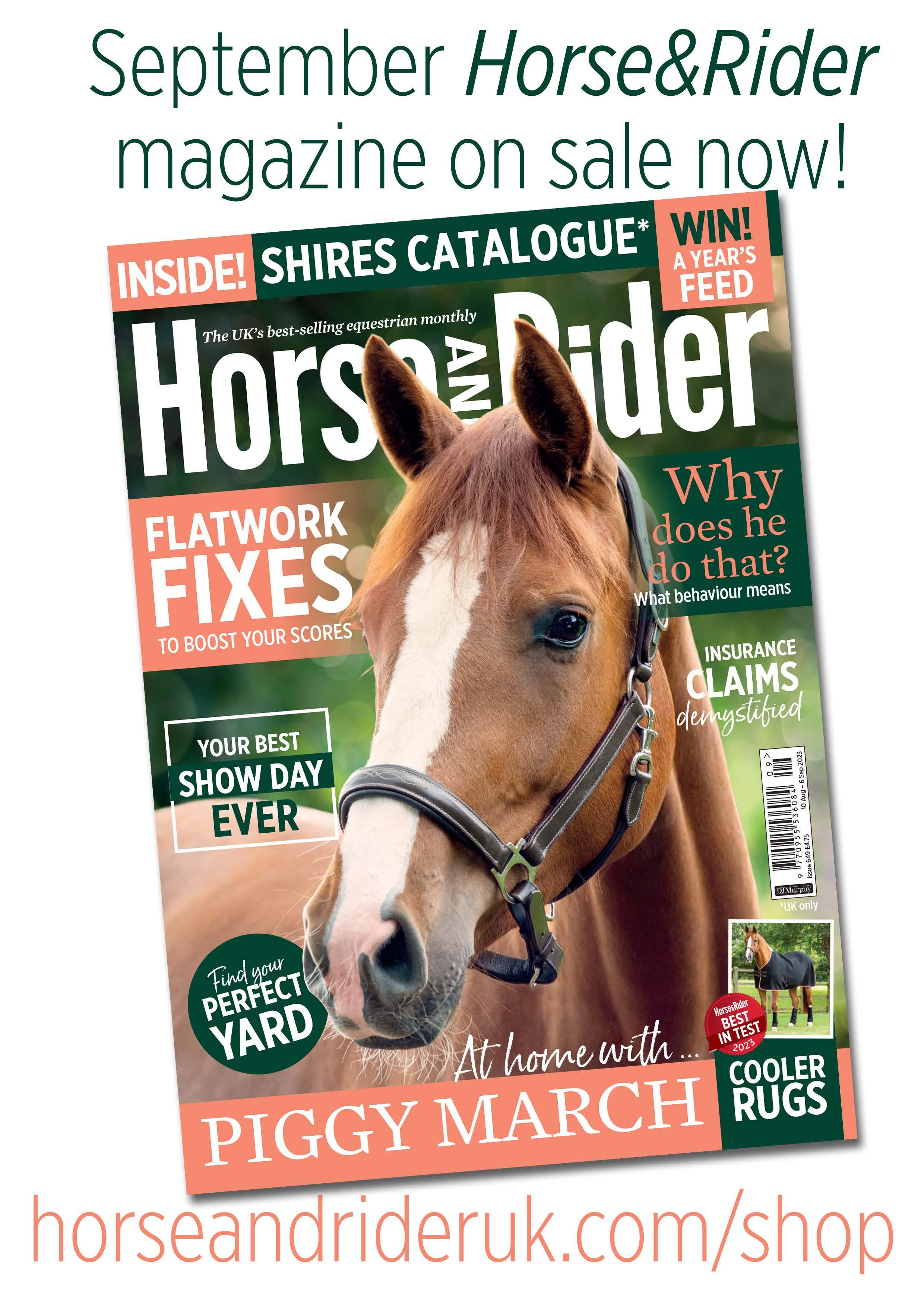












Louise was bitten by the horsey bug at age two, and has ridden and owned horses ever since, competing in eventing as well as enjoying training her horses – and herself: she’s a BHS Int SM.
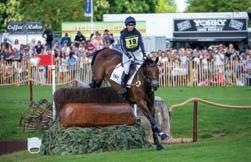

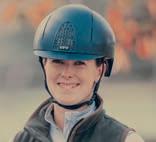
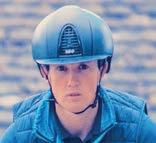


While a lot has changed in our understanding of stereotypic behaviours in horses, learning about the causes of difficult equine behaviours has been slower to be updated. But I know every reader will agree that we owe it to the horses we love so much to not just stick to the old ways of thinking we were taught as children, and to update our knowledge to ensure we’re able to provide the best care we can. This issue, Redwings Senior Welfare Veterinary Surgeon Nic de Brauwere explains that different kinds of behaviour you may previously have dismissed as quirky or tricky could actually be indicators of anything from low-level
discomfort to fairly significant pain, even if the horse is not obviously lame. It makes sobering reading, as I’m sure we can all recall a horse we’ve known who displayed some of the behaviours Nic discusses.
But knowledge is power, and getting the word out to horsey friends is the best thing we can all do to help as many horses as possible to live happy, pain-free lives. Starting today.

Piggy March, sharing her insights into her career, juggling competing and family life, and the horses and team who have helped her reach the top of her sport, on p44.
Louise Kittle, Editor-in-ChiefRecognising the achievements you’ve made so far on your horsey journey is integral to future success. On p56 Alison explains just how you can do that.
A connection from leg to hand is essential to clear, consistent communication between you and your horse. This issue
Phoebe shares her exercises to help you achieve that on p32.
Do you know what’s expected of you when you enter the showring?
From the group show to the judge’s ride, and everything else, Sam explains it all on p38.
Not everyone has access to beautiful facilities, but with an area of level ground you can try out Tom’s flatwork tips for riding on grass – turn to p16.
How much do you understand of the physiology of your horse’s digestive tract?
Vet Laura has the lowdown, with practical advice for how you can support good gut health, too, on p64.

This issue, vet and eventer Jess tells us how she manages her horses to optimise their wellbeing. Try out her practical advice on p106.
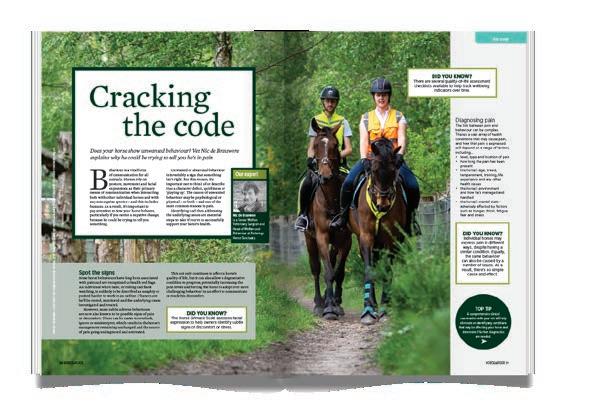
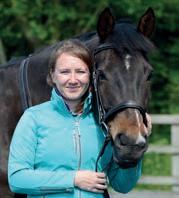
In eventing, the dressage phase usually takes place in a grass arena, which is why so many eventers, including myself, like to train regularly on a grass surface at home. While you might prefer a surface for most of your schooling, if you’re intending to go out competing, it’s essential that you do some training on grass as well.
In addition, being ridden on different surfaces is good for horses, making them stronger and more balanced, and it also improves their proprioception.
In this feature, I’ll offer some useful test riding tips to help boost your scores, as well as exercises that will not only improve your horse’s way of going, but make schooling more fun for both of you, too.
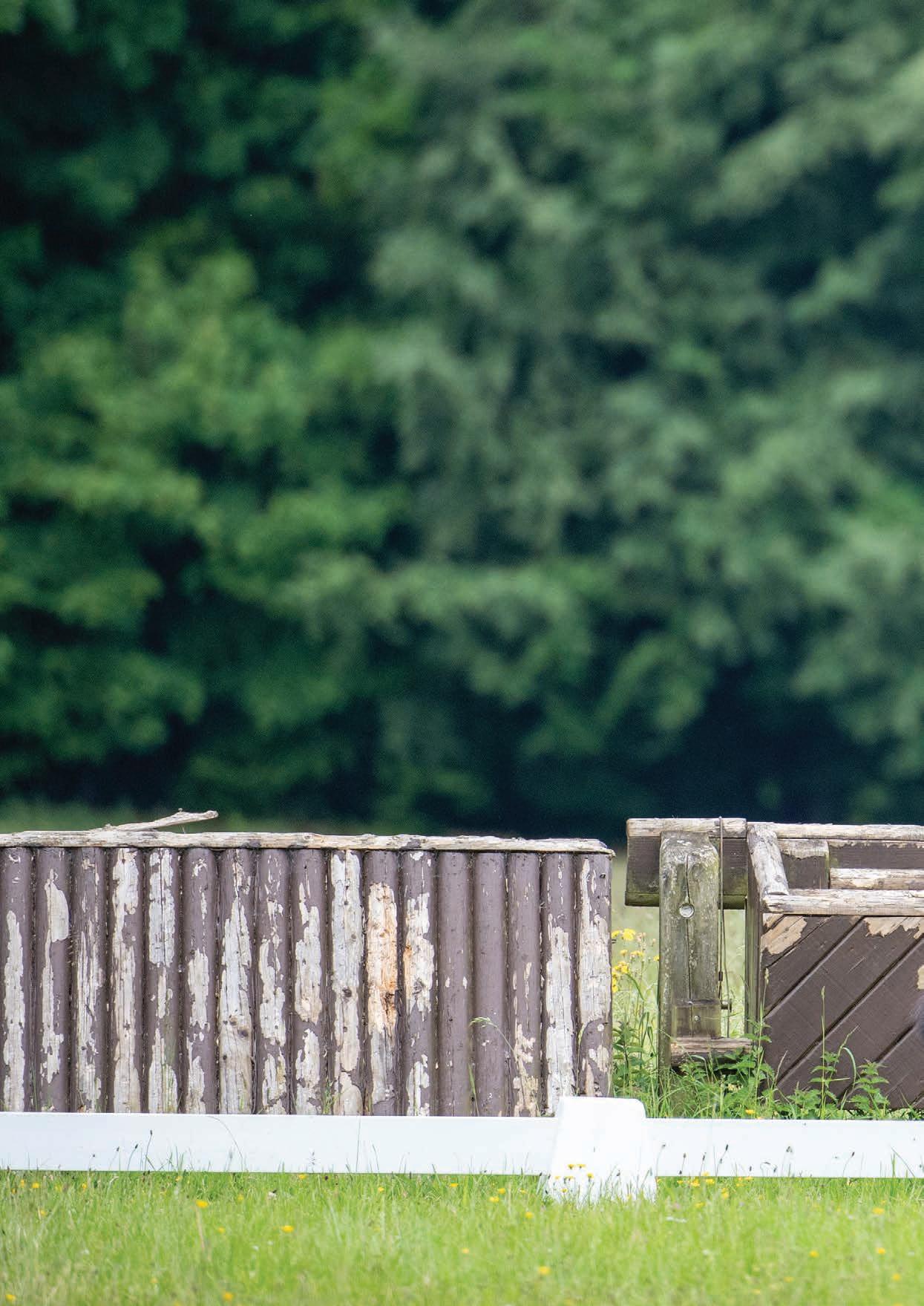
➤
No arena? No problem. Grass can make a great surface for practising your dressage moves, says Tom McEwenPhotos: Jon Stroud
this feature. . . ➤ Two transformative polework exercises


If you’re intending to go out competing, it’s essential that you train on grass
➤ The secret to accurate circles ➤ Ride the perfect corner
Taking time to recognise your achievements is the key to making progress, says Alison Buttery
Most of us have hopes, dreams and aspirations relating to our horses and our riding goals. Sometimes, these can seem a long way off, while at other times, they feel tantalisingly just out of reach. The key to arriving at the place where you want to be is being able to manage yourself and your progress towards the best possible outcomes for you and your horse. In essence, it’s about focusing on the process, rather than being hooked on the outcome.
We all know that the road to success – however you interpret that – is never perfectly straight. There will inevitably be ups, downs and roundabouts along the way, when we’re sidetracked and have to navigate life’s challenges. But, in fact, here lies the joy and fulfilment in owning and riding horses. Passing through, over and around those obstacles helps us to learn, grow and become more resilient. When we find ourselves on the other side of those blocks, the highs are even higher and the feelings of achievement and pride are even greater.
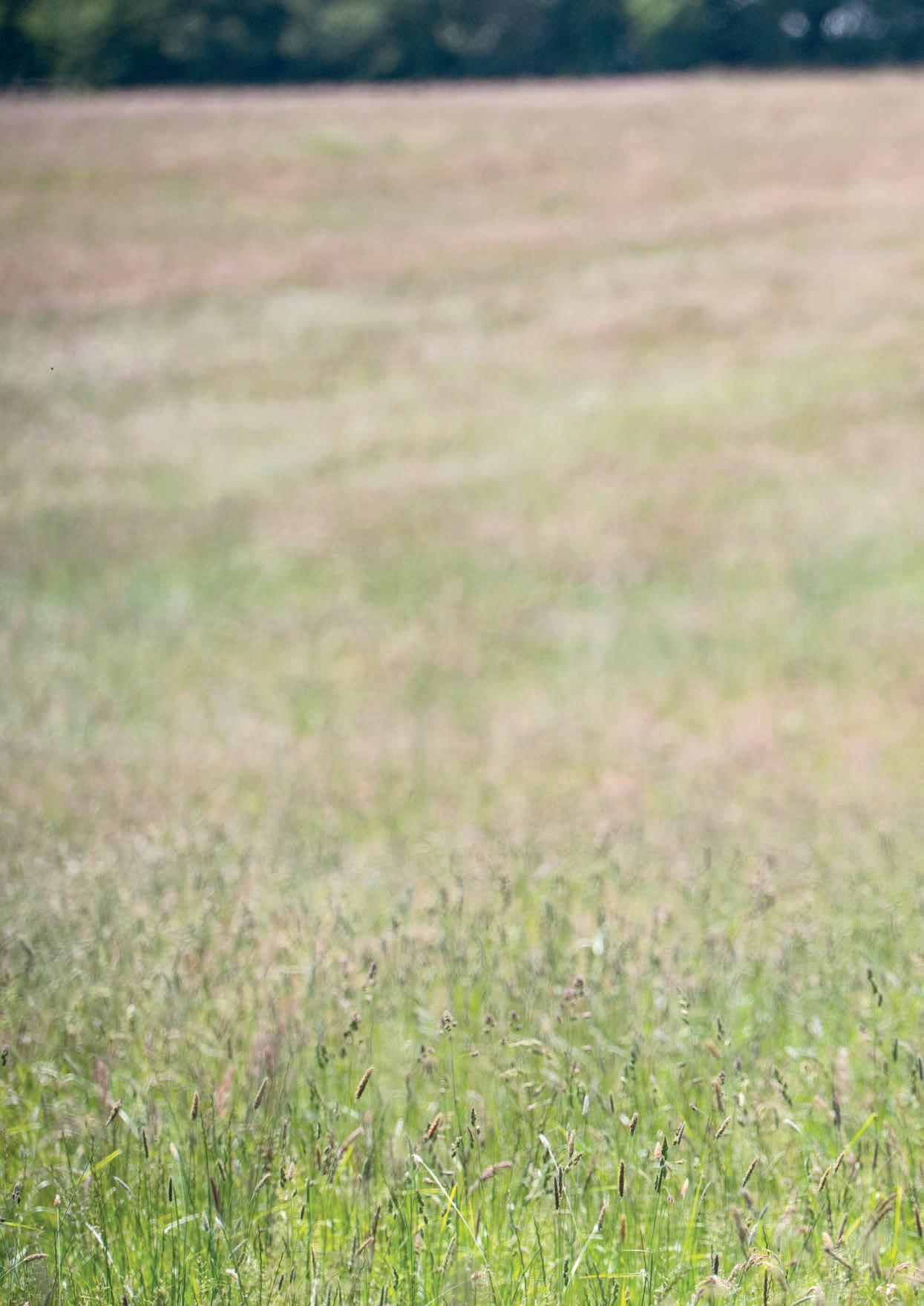

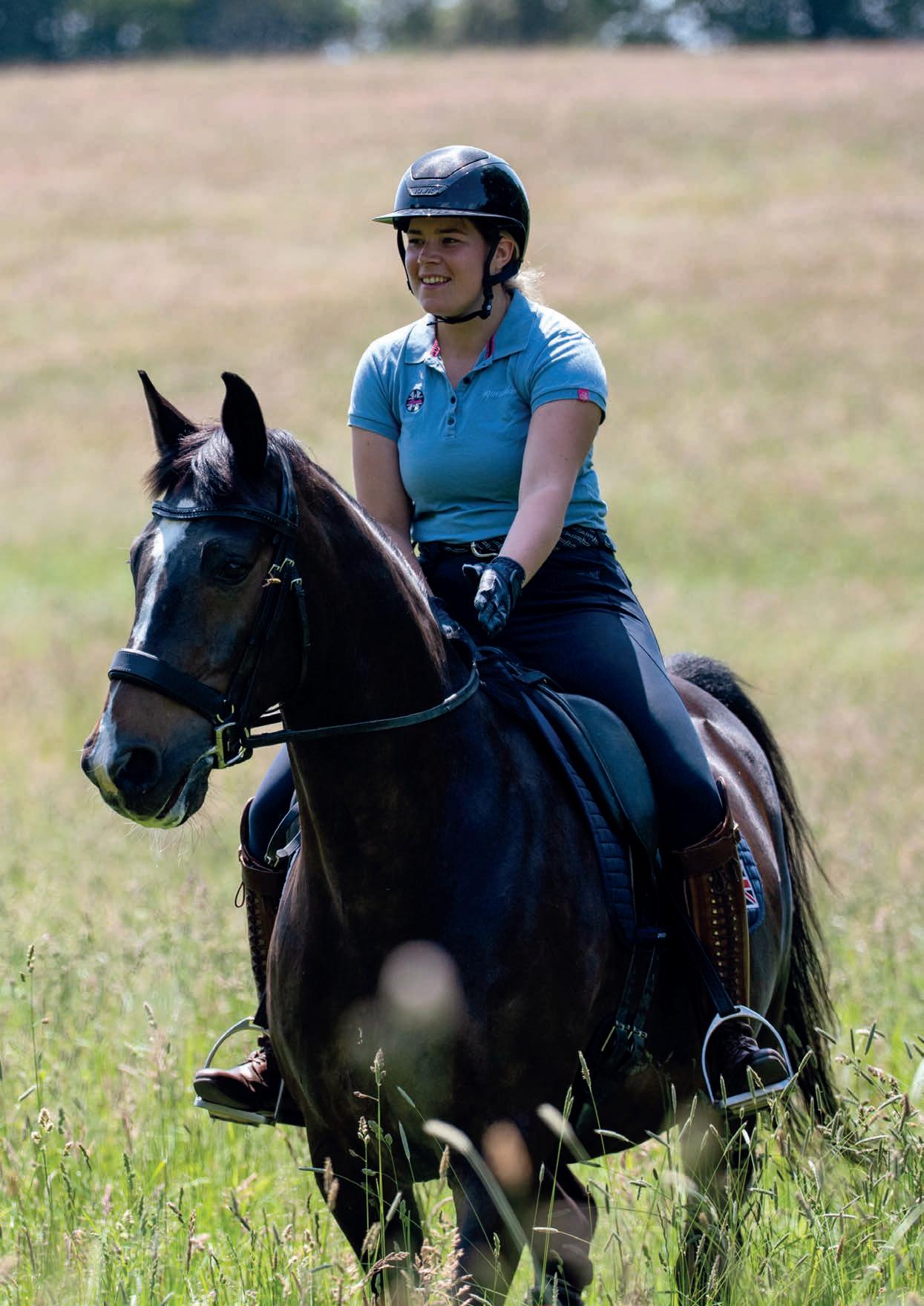
Higgins is a BHS senior coach, and professional sports and remedial therapist, specialising in assessing equine posture and movement. She’s known for her use of anatomical painting on live horses when teaching.

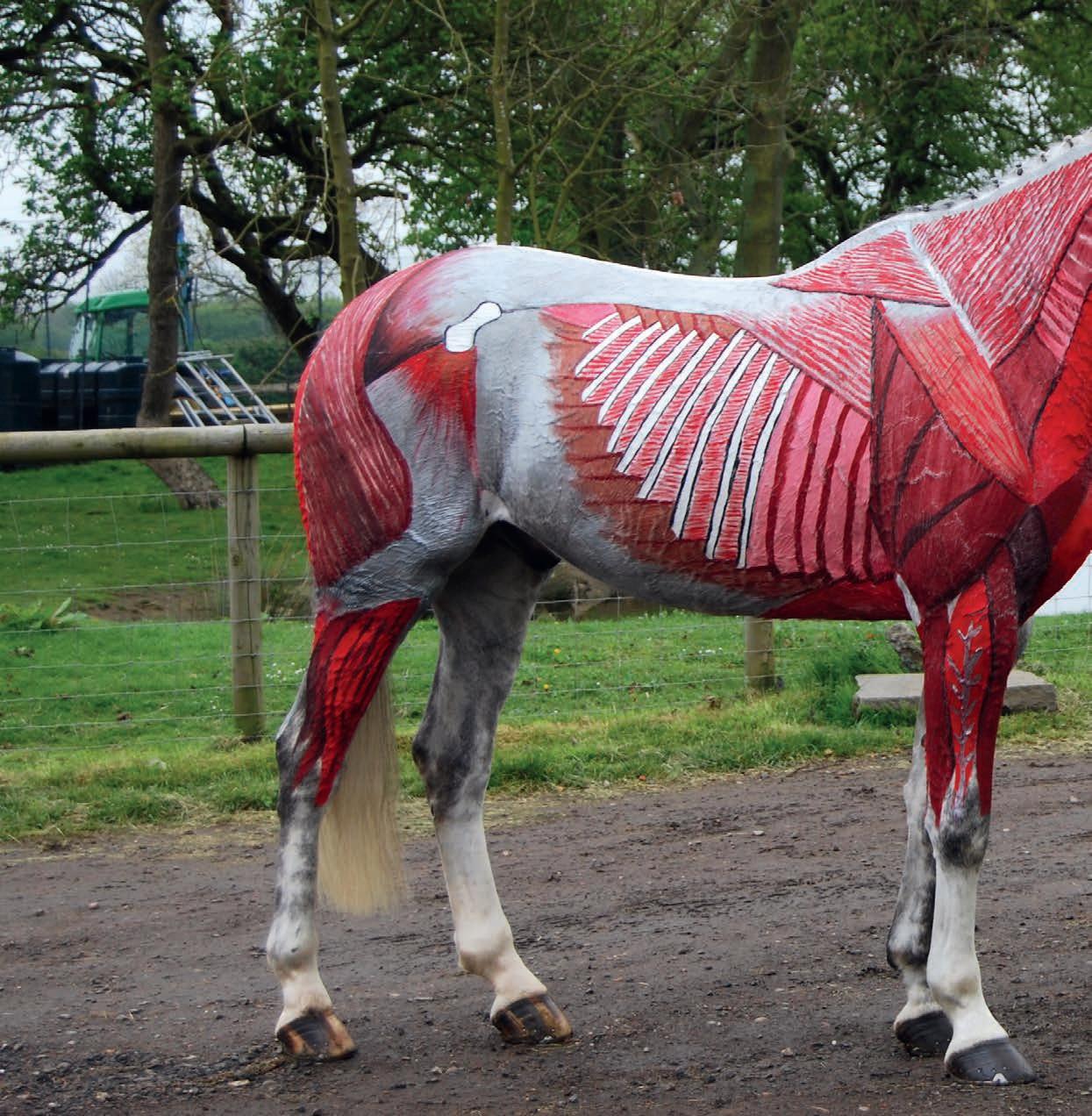
Remedial equine therapist Gillian Higgins explains how to make massage a part of your daily horse care routine
You know how tired, achy muscles can make you feel miserable, stiff, uncomfortable and generally lacking in energy. But have you considered that your horse can feel the same?
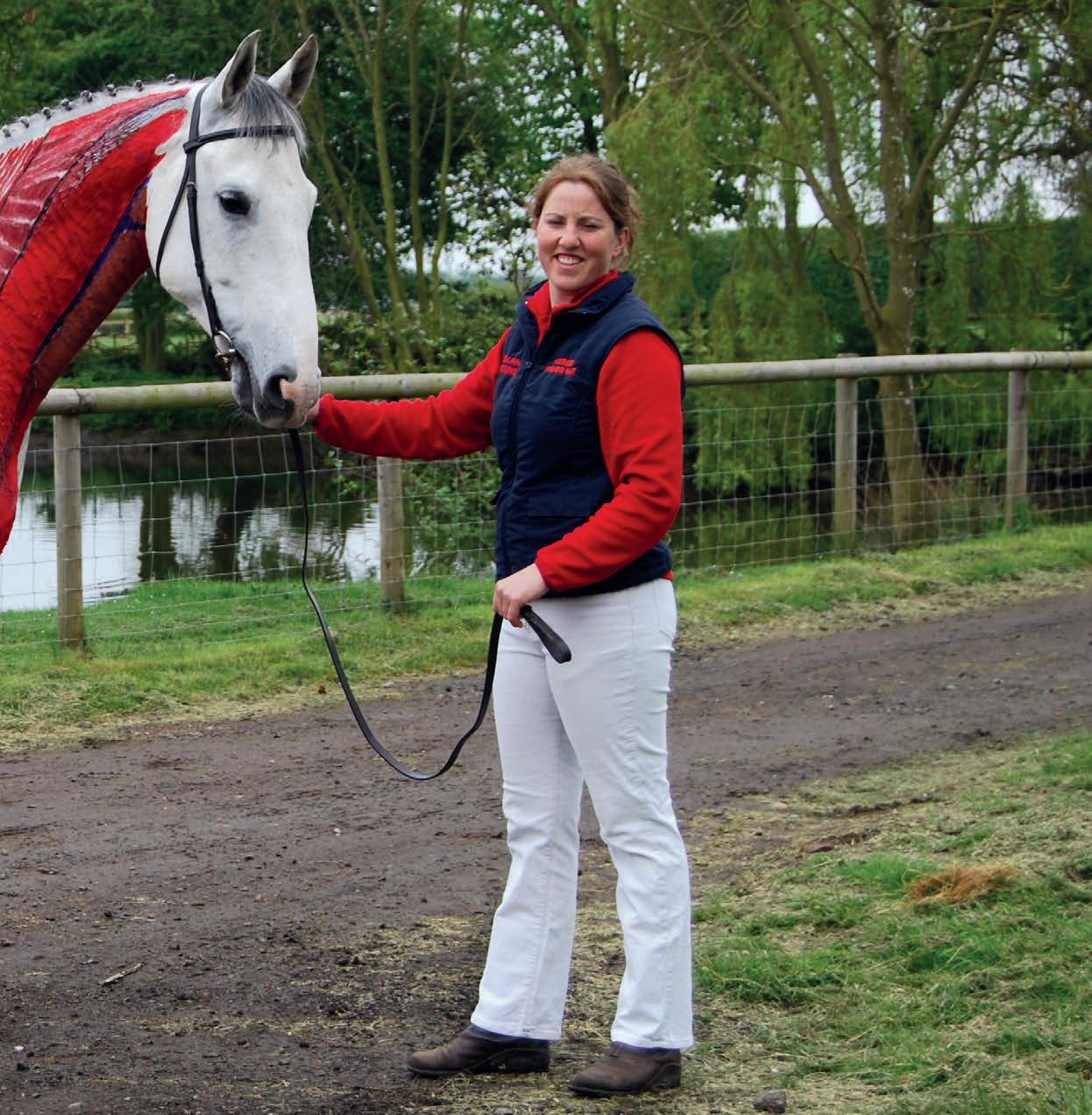
As the saying goes, prevention is better than cure, and you don’t need to wait until your horse has a problem. Massage therapy is one of the tools at your disposal and it’s very effective and powerful. So let’s look at what you can do in between treatments to help keep your horse comfy.
Whichever activities you take part in, your horse will feel the benefits of massage. As his care-giver, taking responsibility for his musculoskeletal comfort is very important.
Think of your horse as an athlete. As soon as you add weight on his back, you’re also adding stress and strain on all his joints, ligaments and soft-tissue structures. As a result of this, his posture and ability to move, balance and perform are compromised.
Think of massage as grooming with your hands. Get into the habit of running your hands all over your horse’s body and noting what you feel.
Equine massage helps your horse in so many ways, as it...
• promotes mental and physical relaxation
• improves comfort and provides some pain relief
• reduces muscle tension and discomfort
• improves suppleness
• increases range of movement
• helps with good posture
• enhances circulation
• supports the immune system
• reduces the chance of injury
• builds a bond between you and your horse
Taking responsibility for your horse’s musculoskeletal comfort is important
